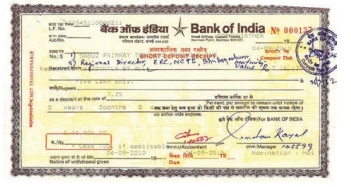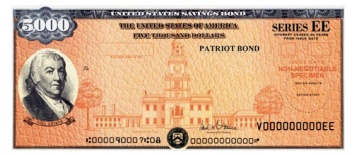Commerce - Money Market Instruments | 12th Commerce : Chapter 6 : Financial Markets : Money Market
Chapter: 12th Commerce : Chapter 6 : Financial Markets : Money Market
Money Market Instruments
Money Market Instruments
There are many kinds of Instruments available in
Money Market. In India, till 1986, only a few instruments were available. They
were as follows:
(i) Treasury Bills in the Treasury Market
(ii) Money at Call and Short Notice in the Call
Loan Market
(iii) Commercial Bills and Promissory Notes in the
Bill Market
Now in addition to the above, the following new
instruments come into existence:
(i) Commercial Papers
(ii) Certificate of Deposits
(iii) Inter-Bank participation Certificates.
(iv) Repo Instruments.
These instruments are brieflty highlighted in this
chapter.
Treasury Bill Market
A market for the purchase and sale of Treasury
Bills is known as a “Treasury Bills Market”.
1. Treasury Bills
Treasury bills are very popular and enjoy a higher
degree of liquidity since they are issued by the Government. A Treasury bill is
nothing but a promissory note issued for a specified period stated therein. The
Government promises to pay the specified amount mentioned therein to the bearer
of the instrument on the due date. The period does not exceed a period of one
year.
General Features
Treasury Bills incorporate the following general
features.
1. Issuer
2. Finance Bills
3. Liquidity
4. Vital Source
5. Monetary Management
Types of Treasury Bills
Treasury Bills are issued to the public and other
financial institutions for meeting the short-term financial requirements of the
Central Government. These bills are freely marketable and they can be bought
and sold at any time and these bill are tradable in secondary market as well.
On the basis of periodicity, Treasury Bills may be
classified into three. They are:
1) 91 days Treasury Bills
2) 182 days Treasury Bills and
3) 364 days Treasury Bills
Ninety one days Treasury Bills are issued at a
fixed discount rate of 4 per cent as well as through auctions. The RBI holds 91
days and 182 Treasury Bills and they are issued on tap basis throughout the
week. 364 days Treasury Bills do not carry any fixed rate. The discount rate on
these bills are quoted in auction by the participants and accepted by the
authorities. Such a rate is called cut off rate.
2. Certificate of Deposits

Specimen Copy of Certificate of Deposit
Certificate of Deposits are short-term deposit
instruments issued by banks and financial institutions to raise large sums of
money. Certificate of Deposits are issued in the form of usance promissory
notes. They are easily convertible in nature and are in marketable form having
particular face value and maturity. The Certificate of Deposit is transferable
from one party to another. Due to their negotiable feature, they are also known
as negotiable certificate of deposit.
Issuers
The Issuers of Certificate of Deposits are
Commercial Banks, Financial Institutions, etc.,
Subscribers
Certificate of Deposits are available for
subscription by individuals, corporations, trusts, associations and NRIs. It is
a document of title to a time deposit. It is a bearer certificate and is
negotiable in the market.
Features of Certificate of Deposit
1. Document of title to time deposit
2. It is unsecured negotiable instruments.
3. It is freely transferable by endorsement and
delivery.
4. It is issued at discount to face value.
5. It is repayable on a fixed date without grace
days.
3. Commercial Bills
A bill of exchange issued by a commercial
organization to raise money for short- term needs. These bills are of 30 days,
60 days and 90 days maturity.
The Commercial Bill is an instrument drawn by a
seller of goods on a buyer of goods. It possesses the advantages like
self-liquidating in nature, recourse to two parties, knowing exact date of
transactions, transparency of transactions etc.,
Specimen Copy of Commercial Bill
Features
The features of the Commercial Bills are as
follows:
1. Drawer
2. Acceptor
3. Payee
4. Discounter
5. Endorser
6. Assessment
7. Maturity
8. Credit Rating
Types
a. Demand
Bills
A demand bill is one wherein no specific time of
payment is mentioned. So, demand bills are payable immediately when they are
presented to the drawee.
b. Clean
bills and documentary Bills
Bills that are accompanied by documents of title to
goods are called documentary bills. Clean bills are drawn without accompanying
any document.
E.g. Railway Receipt and Lorry Receipt
c. Inland
bills and Foreign Bills
Bills that are drawn and payable in India on a
person who is resident in India are called inland bills. Bills that are drawn
outside India and are payable either in India or outside India are called
foreign bills.
d. Indigeneous
Bills
The drawing and acceptance of indigenous bills are
governed by native custom or usage of trade.
e. Accommodation
Bills
Accommodation bills are those which do not arise
out of genuine trade of transactions.
4. Government or Gilt-Edged Securities Market
A market whereby the Government or gilt-edged
securities can be bought and sold is called ‘Government Securities Market’.
Government or Gilt-Edged Securities
Government securities are issued for the purposes
of refunding the maturing securities, for advance refunding securities, which
have not yet matured and for cash financing, i.e., raising fresh cash
resources.

Specimen Copy of Government or Gilt-Edged Securities
Characteristics
Government Securities plays a significant role in
the Indian Money Market. The characteristics of Government Securities are
discussed below:
1. Agencies
Government securities are issued by agencies such
as Central Government, State Governments, semi-government authorities like
local Government authorities, e.g. municipalities, autonomous institution such
as metropolitan authorities, port trusts etc.,
2. RBI
Special Role
RBI takes a special and an active role in the
purchase and sale of these securities as part of its monetary management
exercise.
3. Nature
of Securities
Securities offer a safe avenue of investment
through guaranteed payment of interest and repayment of principal by the
Government.
4. Liquidity
Profile
The liquidity profile of gilt-edged securities
varies. Accordingly liquidity profile of securities issued by Central
Government is high.
5. Tax
Rebate
A striking feature of these securities is that they
offer wide-range of tax incentives to investors. This has made these securities
very popular for this benefit.
6. Market
As each sale and purchase has to be negotiated
separately, the Gilt-Edged Market is an Over-The-Counter Market. The Government
securities market in India has two segments namely primary market and secondary
market.
7. Forms
The securities of Central and State Government take
such forms as inscribed stock or stock certificate, promissory note and bearer
bond.
8. Participants
The participants in Government securities market
include the Government sector comprising Central and State Governments whose
holdings represent governmental transfer of resources.
9. Trading
Although the secondary market for Government
securities is narrow, small and less active, banks and corporate holders who
purchase and sell Government securities on the stock exchanges participate in
trading.
10. Issue
Mechanism
The Public Debt Office (PDO) of the RBI undertakes
to issue government securities.
11. Issue
opening
A notification for the issue of the securities is
made a few days before the public subscription is open.
12. Grooming
Gradual
Acquisition of securities nearing maturity through
the stock exchanges by the RBI in order to facilitate redemption is described
as ‘grooming’.
13. Switching
The purchase of one security against the sale of
another security carried out by the RBI in the secondary market as part of its
open market operations is described as ‘Switching’.
14. Auctioning
A method of trading whereby merchants bid against
one another and where the securities are sold to the highest bidder is known as
‘auctioning’
London Money Market is the oldest, most
developed and leading MoneyMarket in the world.
New York Money Market is ranked as the
second well-developed Money Market in the world next only to the London Money
Market.
For Own Thinking
If you earn money, which investment plan
would you like?
1. Mutual Funds
2. Shares
3. Debentures
4. Treasury Bill
5. Commercial Bill
6. Certificate of Deposit Why? Give
reasons.
Key words
Treasury Bills
Commercial Bills
Commercial Papers
Government Bonds
Money Market
Capital Markets
Certificate of Deposits
Auctioning
For Future Learning
How to Invest Money in Money Market
Funds?
Gathering information about Money Market
Funds
Learn about money market
Understand the goal of money market
funds.
Learn the disadvantages of money market
funds.
Investing in Money Market Funds
Understand the different types of Money
Market Funds
Understand the purpose of Money Market
Funds
Compare past yields
Buying and Tracking of Money Market Funds
Related Topics